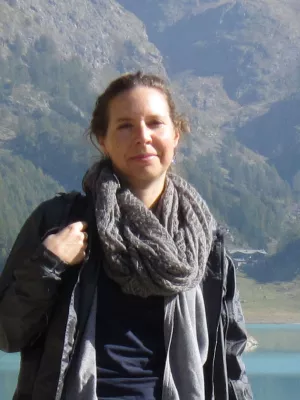
Chiara Molinari
Postdoctoral fellow

The environment they lived in: anthropogenic changes in local and regional vegetation composition in eastern Fennoscandia during the Neolithic
Author
Summary, in English
Understanding about regional versus local changes in vegetation is critical in answering archaeological questions, in particular at a time when humans are assumed to have caused higher disturbances at local scales rather than regional scales; this is the case during the Neolithic. The aim of this paper is to assess the impact of Neolithic land use on regional and local vegetation dynamics, plant composition and disturbance processes (e.g. fire) in eastern Fennoscandia. We apply the Landscape Reconstruction Algorithm (LRA) to high-resolution pollen records from three lacustrine sediment cores that cover the Neolithic period. We calculate changes in vegetation composition and the rate of plant compositional change. Fire dynamics are estimated as an indicator of land use, although fire can result from both natural and anthropogenic disturbances. Our results show that during the Early Neolithic, changes were mainly driven by natural and climate-induced factors and vegetation composition and fire activity were similar at both regional and local scales. From ca. 4000 bc onwards, trends in vegetation and fire dynamics start to differ between regional and local scales. This is due to local land uses that are overshadowed at the regional scale by climate-induced factors. The use of the LOVE model in pollen analyses is therefore very useful to highlight local land uses that are not visible by using REVEALS.
Department/s
- Dept of Physical Geography and Ecosystem Science
- BECC: Biodiversity and Ecosystem services in a Changing Climate
- MERGE: ModElling the Regional and Global Earth system
Publishing year
2020
Language
English
Pages
489-506
Publication/Series
Vegetation History and Archaeobotany
Volume
30
Document type
Journal article
Publisher
Springer
Topic
- Environmental Sciences
- Archaeology
Keywords
- Environmental history
- Fire
- Human–environment interactions
- Land cover
- Landscape reconstruction algorithm (LRA)
- Plant compositional change
- Pollen
- Archaeobotany
Status
Published
ISBN/ISSN/Other
- ISSN: 0939-6314

